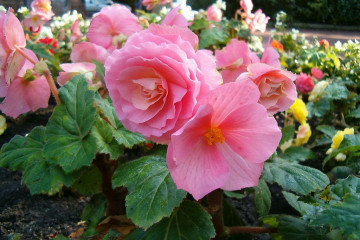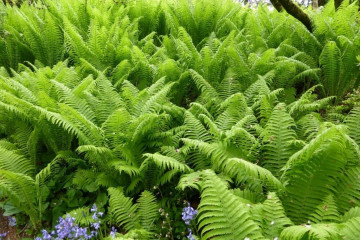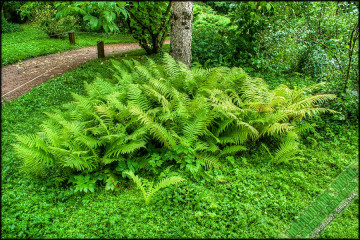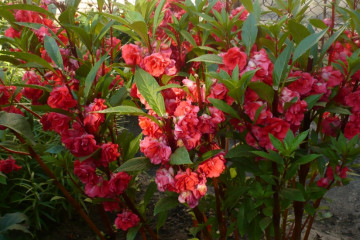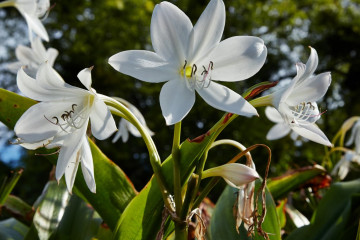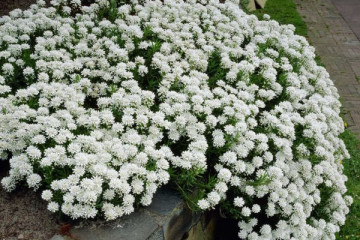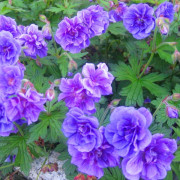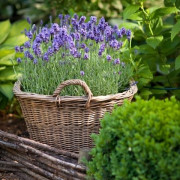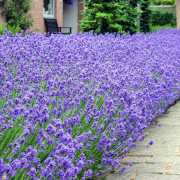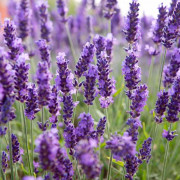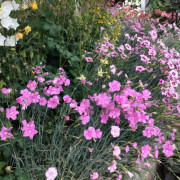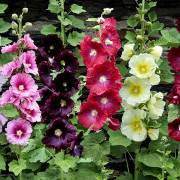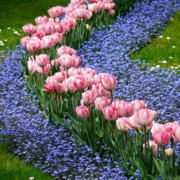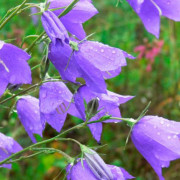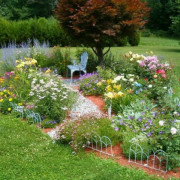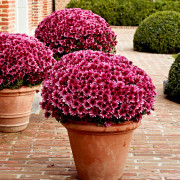Perennial garden yarrow - planting and care in a flower bed
Content:
Perennial yarrow has long been known as a drying herb. This preparation is useful and helps against a number of diseases. Recently, varieties of this flower have been used for decorative purposes. Florists are especially attracted by the unpretentiousness of this plant in care and resistance to climatic conditions. There are a lot of types and varieties of flowers, each of them is attractive in its own way.
Yarrow garden: description and characteristics
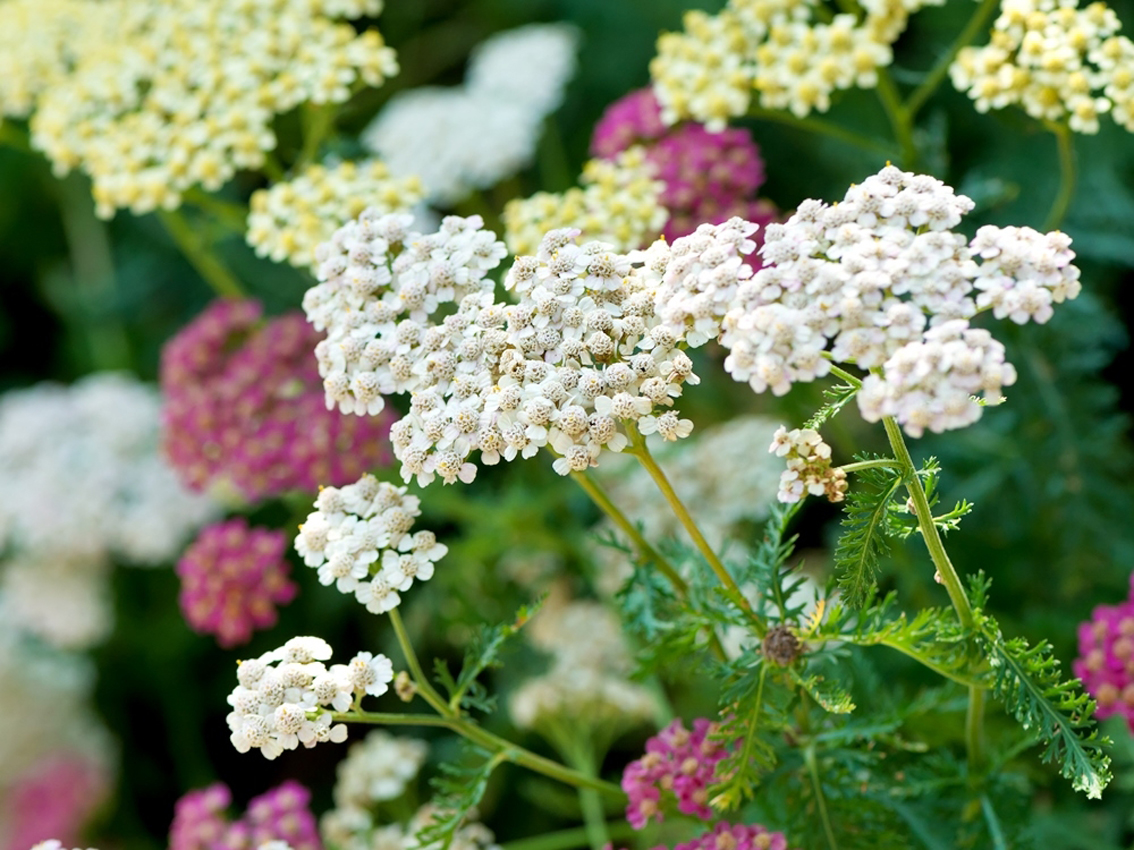
Garden yarrow - an original decoration of the garden
The yarrow plant belongs to the extensive botanical family of Compositae. More than 100 of its species are known, common in the Northern Hemisphere. In nature, it is most often found in the steppe or forest-steppe zone.
The culture existed already during the Middle Paleolithic. At first, its area was considered mainly Asia, later it spread to all continents. According to one version, it owes its Latin name Achillea to the ancient Greek hero Achilles, who healed warriors with her.
Garden perennial yarrow has erect, well leafy stems 50-100 cm high. Leaves are simple or pinnate, can also be linear or lanceolate. Inflorescences are small baskets, collected in dense or loose white, pink or yellow shields. Most of the terry forms are white-flowered.
Classification of species
There are several main types of garden yarrow, which in turn are represented by a wide range of varieties.
Yarrow noble
Under natural conditions, it is found in southern Russia, on the slopes of the Caucasus Mountains and in Western Siberia. Shoots in height are no more than 70-80 cm. Leaves pinnately dissected gray-green tone. Dense and large inflorescences are snow-white in color.

Noble species blooms early
Yarrow
This variety grows in meadows, distributed in the Far East and Japan. The plant is quite compact - the height of the stems ranges from 50-60 cm. The inflorescences are hemispherical, white. Blooms in early or mid August.
Yarrow meadowsweet
This species is most common in the Caucasus and Central Asia. The plant is tall - shoots can reach 1.3 m in height. The leaves are openwork, green with a gray tint. Inflorescences are corymbose, yellow tubular flowers are collected in small baskets. This yellow yarrow blooms in July.
Yarrow Ptarmika
The decorative form of this variety can be found in the European part of Russia. The height of the shoots directly depends on the growing conditions and varies from 50 cm (in arid areas) to 1 m (in a favorable climate). Flowering begins in late June and lasts up to 2 months.
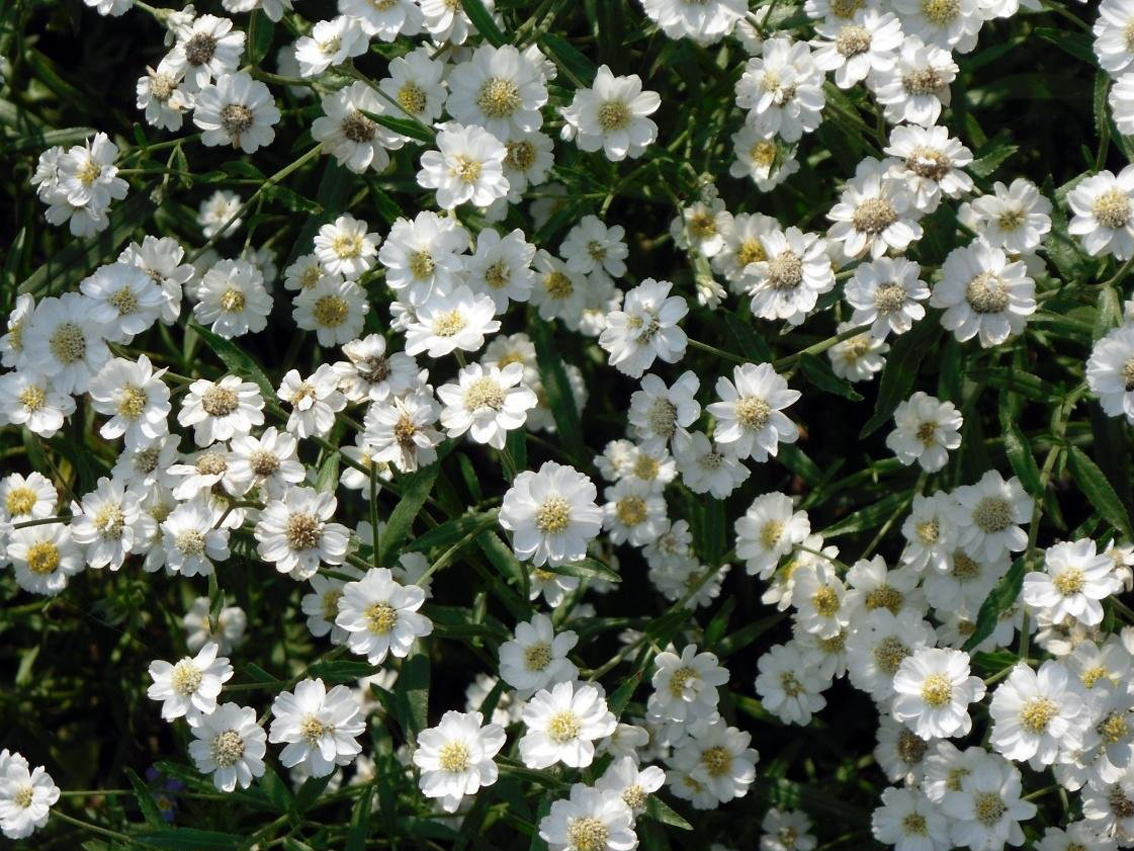
Yarrow Ptarmika has snow-white inflorescences
Felt Yarrow
The most compact variety - the height of the shoots - no more than 15 cm.Under natural conditions, it can be found in Western Siberia and in Eastern Europe.
The color of the inflorescences is yellow-lemon, the form is corymbose.
Yarrow
It is the most common species and is widely known as a medicinal plant. Bristle yarrow also has healing properties. The average height of the stems is 0.8 m. Wild species have white corymbose inflorescences. More cultivated varieties can have different color colors.
Flowering begins in July and lasts until mid-August. What yarrow herb is used for, you can read in more detail in the description of this particular variety.
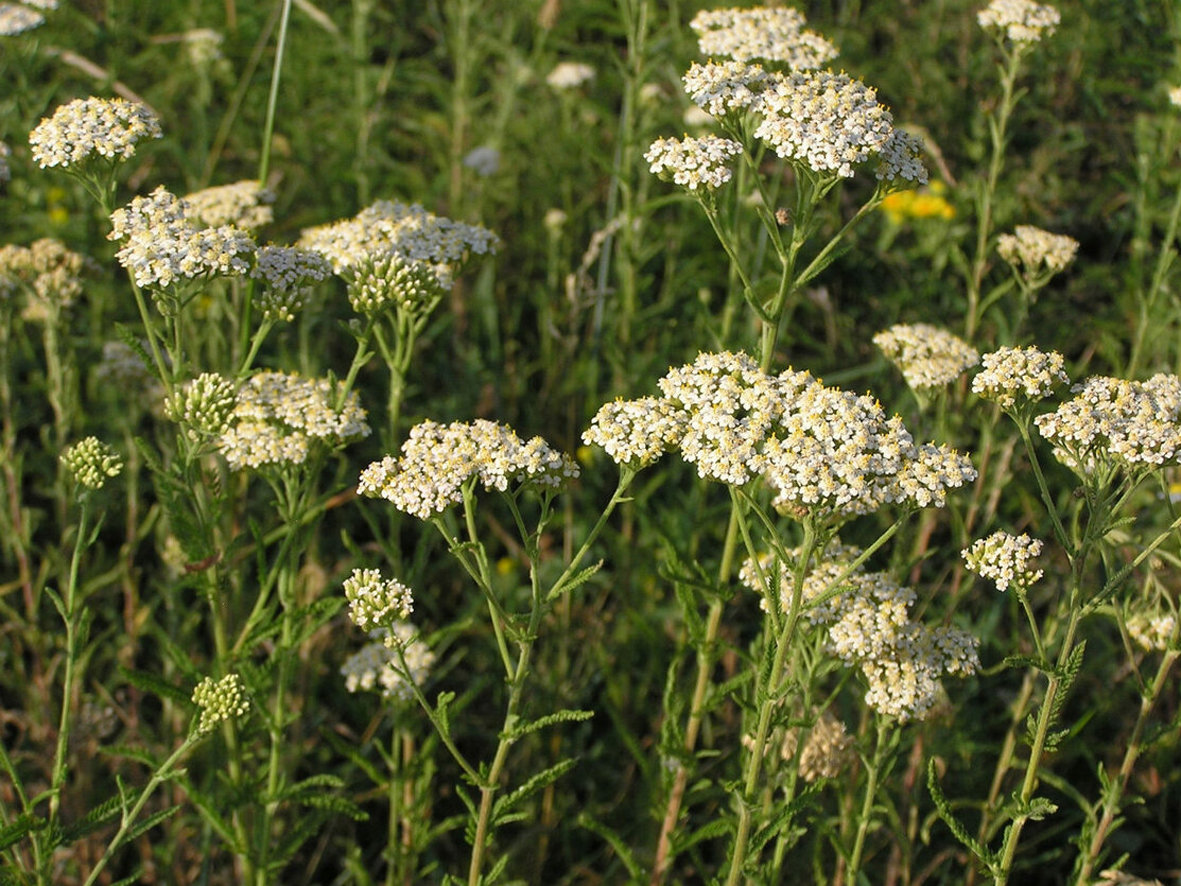
The most common type is a medicinal plant
Most popular varieties
Among the many varieties, there are more than two dozen that are especially loved by flower growers. They differ in both the appearance of the bush and the color of the shoots.
The most popular varieties of common yarrow include:
- Terracotta.
- White Beauty.
- Summervine.
- Serise Queen.
- Paprika.
- Red Velvet.
- Walter Funch.
- Great Expression.
- Lilac Beauty.
- Gold Plate.
- Summer Pastels.
The color of the inflorescences of the Terracotta variety is especially unusual - they have an orange tone with a reddish tint. Yarrow pink (Summer Pastels variety) has a very delicate color of inflorescences.
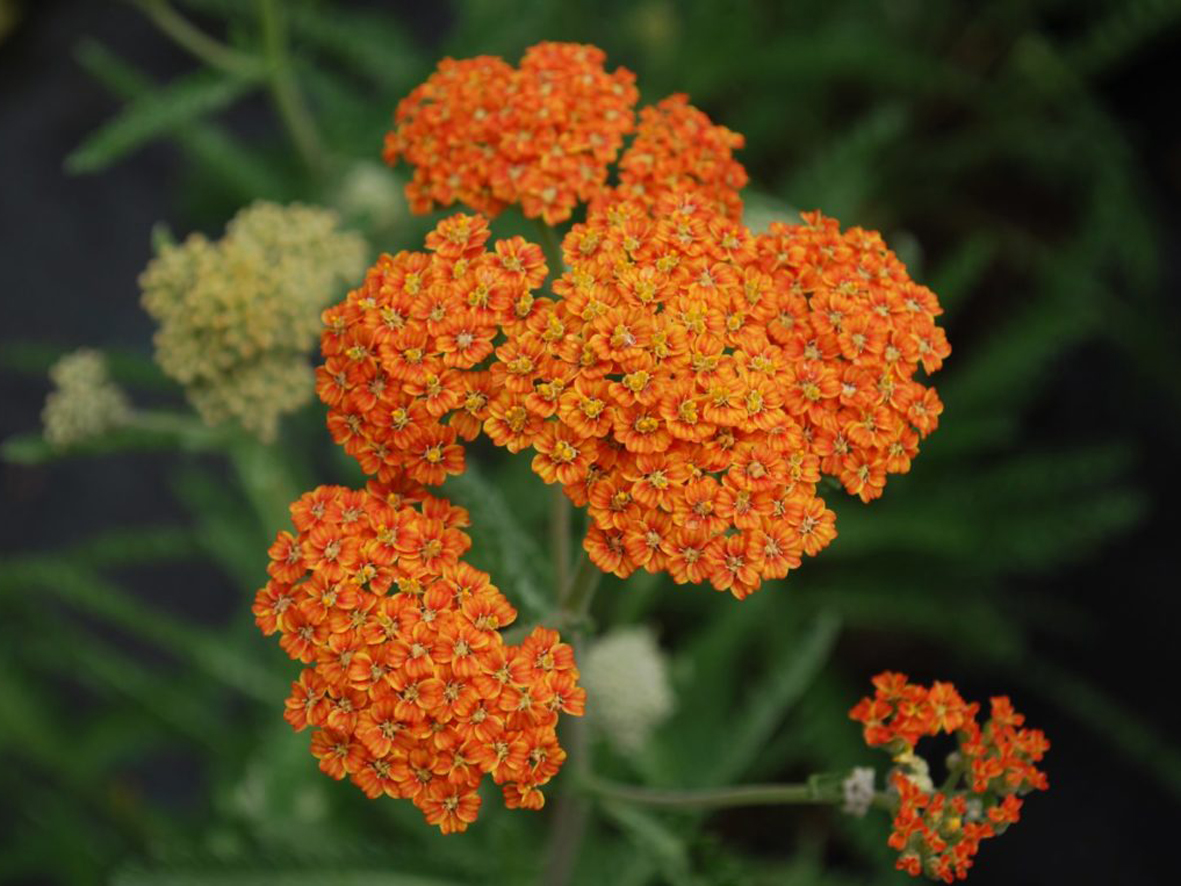
Unusual color of Terracotta inflorescences
Yarrow Ptarmika includes the following popular varieties:
- Stephanie.
- Perris White.
- Boulle de nezh.
- Pearl oyster.
- Pearl Blaupunkt Ballerina.
- White pearls.
- Nobless.
- Dew drop.
The inflorescences of the yarrow Pearl mussel look especially delicate - they have a snow-white color and are collected in loose baskets of small double flowers. Yarrow Pearl has similar characteristics.
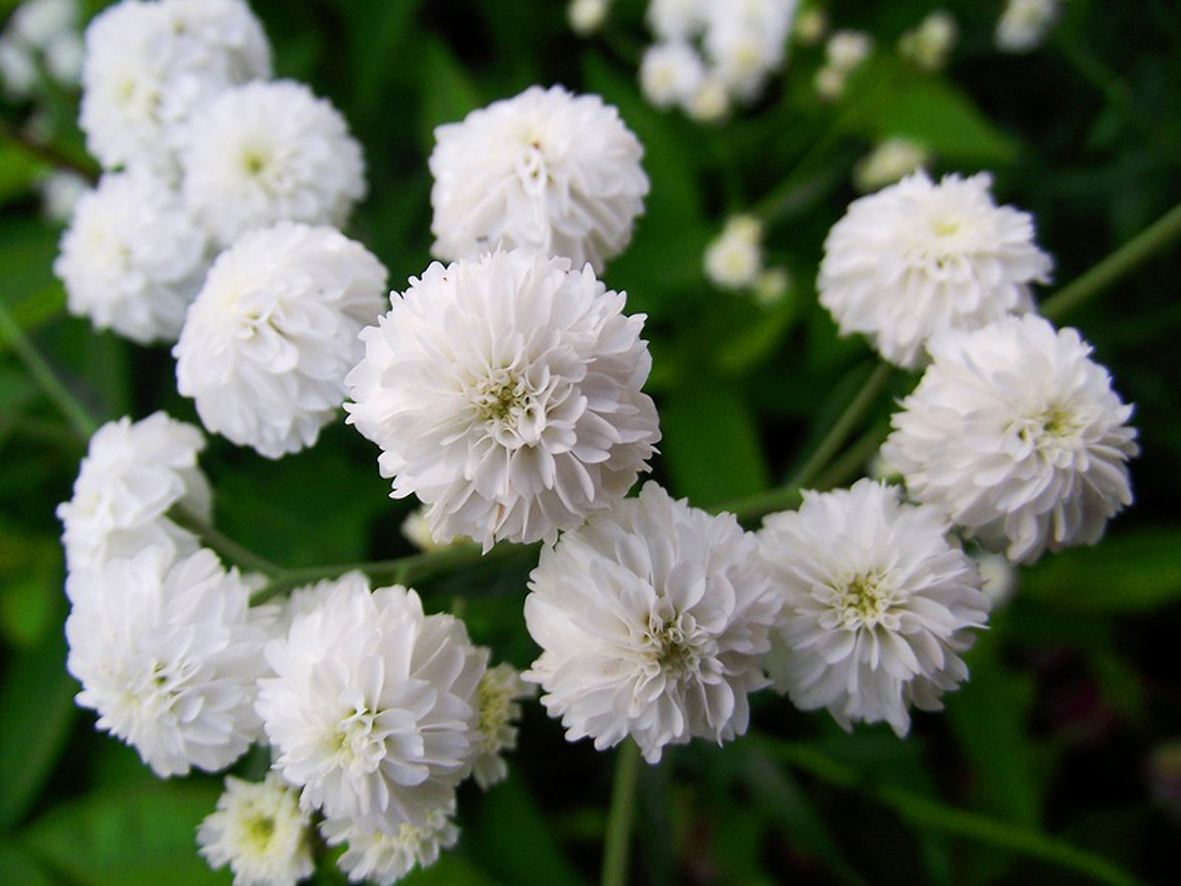
Pearl mussel variety has double flowers
The varieties of the meadowsweet yarrow group are distinguished by the bright color of the inflorescences, mainly in lemon-yellow tones. Common ones include:
- Coronation Gold.
- Eltgold.
- Flowers of Self.
- Parker.
- Moonshine.
- Schwellenburg.

The original Altgold variety
Breeding features
Garden yarrow is not only easy to grow, but also easy to propagate. Even beginners can grow several specimens from seeds. In addition, the methods of grafting and dividing the bush can be applied to it.
Sowing and growing seedlings
Sowing starts at the beginning of March or at the very end of February. Seed material is best purchased in a store - collecting your own is not relevant in this case. It is better to take a flat and wide container for growing seedlings, since the root system of seedlings does not go deeply before the pick. As a soil, you can use a universal seedling substrate or mix garden with peat and sand in a ratio of 2/1/1.
The sowing process is carried out step by step:
- The container is filled with soil and moistened.
- Seeds are evenly distributed over the surface.
- Cover the crops with a layer of soil, the thickness of which is no more than 1 cm.
- Re-moisten the soil.
- Cover the container with glass and put it in a warm and bright place.
As soon as the shoots appear, usually after 8-10 days, they begin to ventilate the greenhouse, and after 2-3 days they completely remove the shelter. The moisture content of the soil should be carefully monitored - the soil should not dry out more than 1 cm.
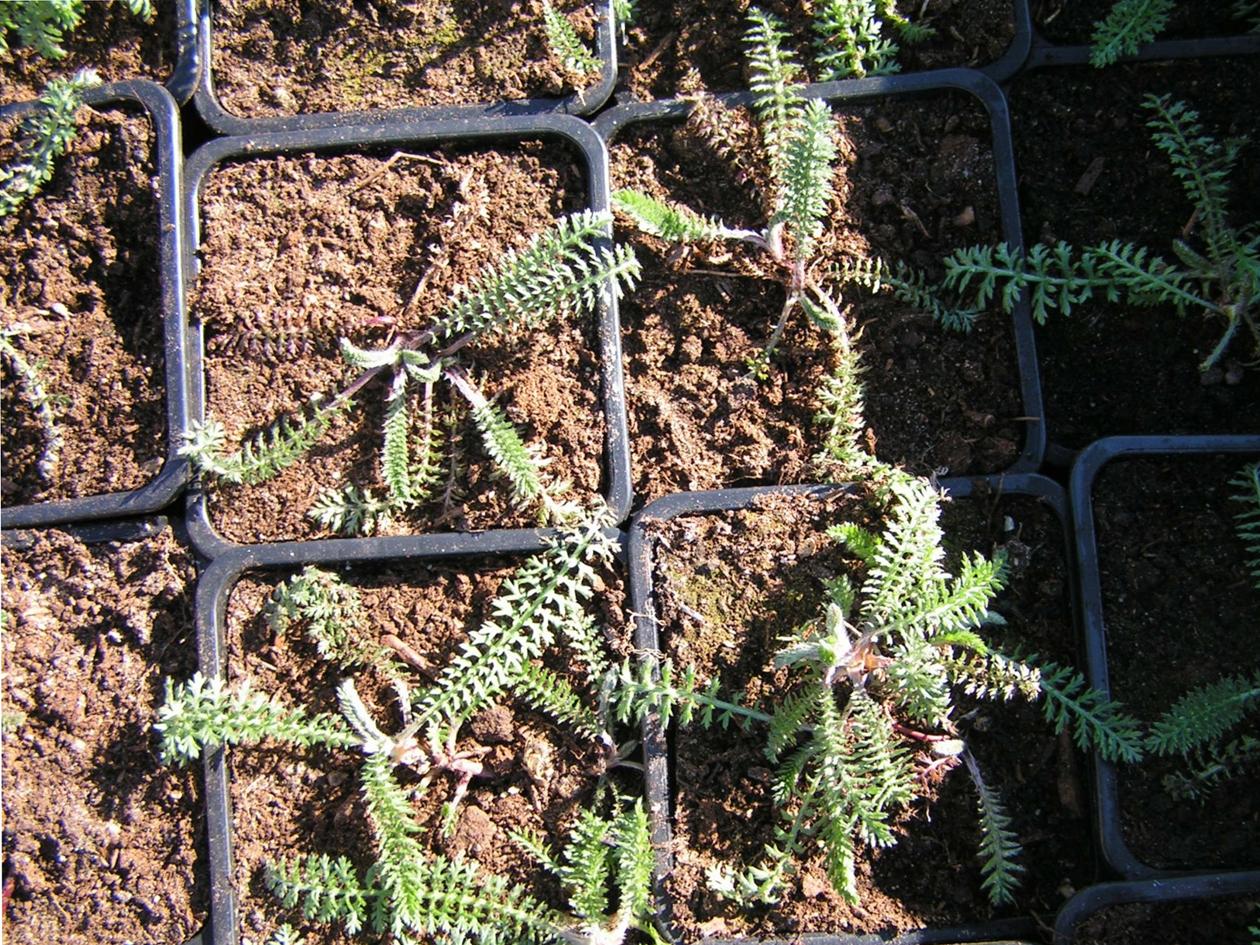
Growing seedlings is not at all difficult
As soon as 2 young leaves appear, the seedlings dive into separate cups. Further care for them consists in regular moistening of the soil, ensuring good illumination and an air temperature of at least 18 ° C. 2 weeks before disembarkation, young seedlings begin to be taken out into the air, gradually increasing the time they are outside. This technique is necessary so that the plants are hardened and planting in the ground is not stressful for them.
Cutting and dividing the bush
Reproduction of the garden yarrow by dividing the bush is most often used when transplanting. An adult plant is dug up, the root system is carefully divided and the resulting parts are planted in a permanent place.
Propagation by cuttings can be used in the summer and carried out directly in the open field. For this, cuttings, 10-12 cm long, are cut from the upper part of the shoots and rooted in a shaded place. In late summer or early autumn, rooted cuttings are planted in a permanent place.
Outdoor care
The unpretentious and hardy yarrow still requires certain care rules. These include watering, loosening, mulching, and weeding. Some varietal varieties need feeding.
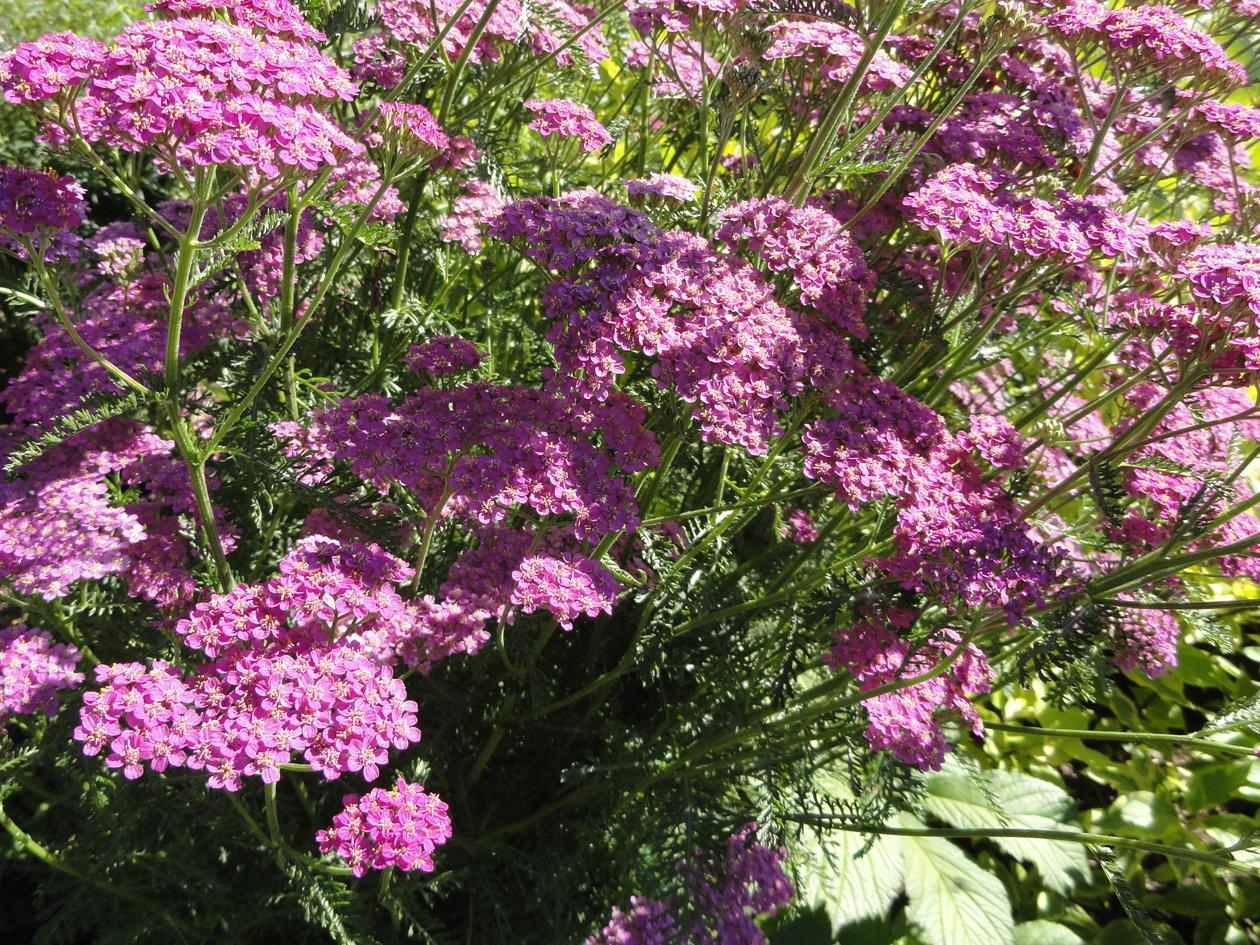
This unpretentious plant still needs some care.
There are a few basic rules:
- Watering - every 8-10 days.
- Transplant - every 3-4 years.
- Mineral complex dressing in the spring.
- Regular weeding.
- Surface loosening of the soil.
There are 3 important points to consider regarding grooming:
- Organic matter cannot be used as fertilizer.
- Mulching plantings is permissible only in very arid climates.
- Watering more often than once every 8 days is necessary only in the absence of precipitation and constantly high air temperature.
It is worth noting that perennial garden yarrow is very undemanding to the composition of the soil and the place of growth. It grows well even in poor soil and tolerates partial shade.
The culture is transplanted once every 3-4 years in the spring by separating strong roots with young shoots from the old bush.
Flowering period
All varieties of yarrow bloom at different times. Some bloom already in June, and some varieties only in mid-August. Most varieties have thyroid inflorescences, which consist of individual small tubular flowers. Their color can be white, yellow and even purple. There are also specimens with double flowers.
The flowering time also depends on the variety. Maximum this period can last 2 months, but the average value is 4-5 weeks. During this period, special changes in care are not required. To prolong flowering, it is necessary to cut off wilted inflorescences, as well as periodically water the plants.
Possible growing problems
Good news for those who decide to plant a yarrow flower on the site will find out that it is not susceptible to diseases and is resistant to pest attacks.
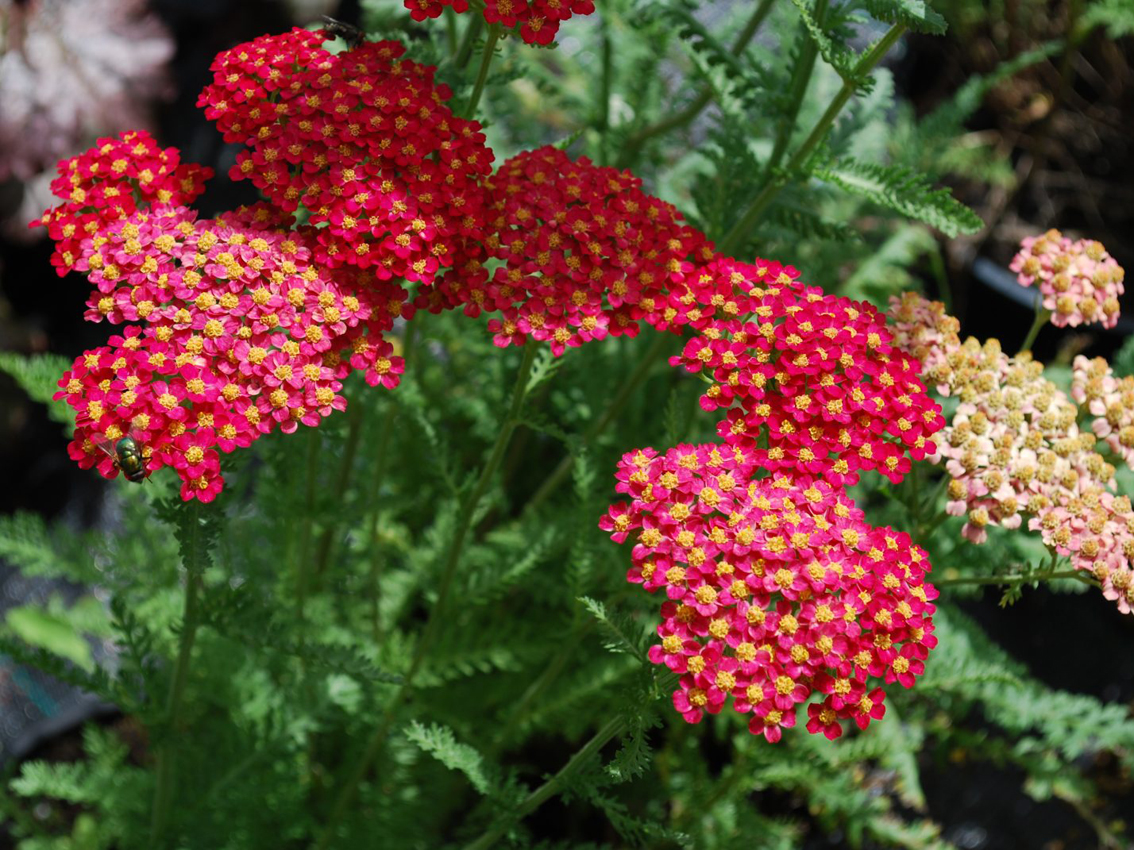
This beautiful plant does not get sick and is not affected by pests.
Problems can only arise with improper care. Most often this is due to non-compliance with the irrigation schedule, since it is easier for this crop to survive drought than waterlogging. It is also not recommended to plant the plant in deep shade - this will lead to a deterioration in flowering or a complete absence of inflorescences.
Use in landscape design
Ornamental yarrow can be called a universal flower in use.It will fit perfectly into a multi-level flower garden, and tall varieties can serve as a low decorative hedge. Compact varieties are planted on alpine hills or in the foreground of flower beds with other crops.
By planting several copies of different varieties, you can get a colored carpet that will bloom from June to August. For example, Red Velvet yarrow and Ptarmica yarrow, Pearl oyster can create a very contrasting composition in the garden. Some varieties are great for cutting into bouquets.
Garden perennial yarrow is a real find for flower growers who do not have enough time or energy to care for capricious plants. It is very undemanding to the composition of the soil and climatic conditions, and very unpretentious in terms of care. It is enough to periodically water the plant and replant it every 3-4 years. The variety of varieties allows you to choose specimens with white, yellow or even purple inflorescences. To use the plant for medicinal purposes, you should know what yarrow helps from and when it is best to harvest it for drying.
